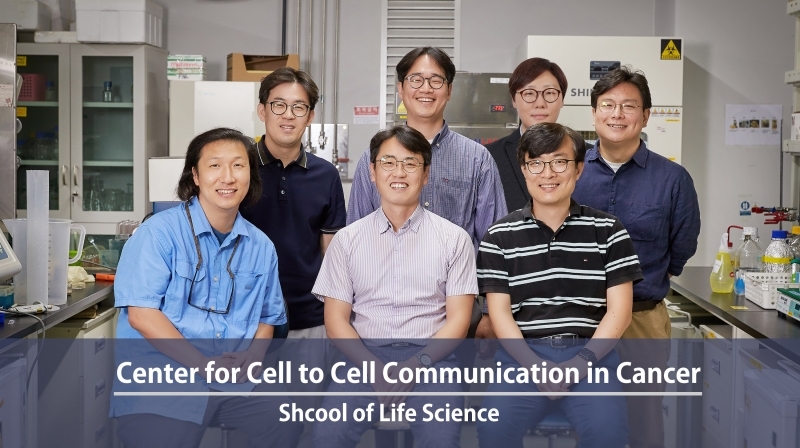UNIST will spur research to combat cancer, using cell-to-cell communication between cancer cells and its surrounding cells. The goal is to identify the principles that control cancer growth and metastasis, and to develop strategies to diagnose and treat cancer in new ways. It is expected to contribute greatly to the fostering of biomedical industry in Ulsan.
The Center for Cell to Cell Communication in Cancers (C5), which was proposed by UNIST and Ulsan City, has selected for the 2018 University Centered Research Laboratory Supporting Project. The research center will be supported by the government (KRW 5 billion) and Ulsan city (KRW 900 million) for up to KRW 5.9 billion over the next nine years, and will serve as a base for cancer control research. With the help of this center, Ulsan City plans to secure R&D infrastructure for the biomedical research and make it a hot spot for industry-university cooperation.
The Center for Cell to Cell Communication in Cancers plans to carry out cancer research in a different way than most cancer researches, which are directed at the cancer cells themselves. The purpose of this project is to clarify the principle of transmitting and receiving signals between cancer cells and other peripheral cells, and to clarify the working principle of ‘cancer microenvironment’.
“If there is a problem in the signal transmission at the molecular level within the cell or between the cells, it could lead to various diseases including cancer,” says Professor Sebyung Kang, Director of C5. “Nano-biotechnology and advanced imaging equipment will help to foster cross-disciplinary convergence and grow related personnel.” He adds, “This will also contribute greatly to building the medical technology-intensive industry, which Ulsan is actively promoting.”
Meanwhile, the University Centered Research Laboratory Supporting Project is one of the group research projects, which aims to establish research base in universities and to induce specialization and specialization of university research institutes. The central research institute established in the university contributes to fostering new researchers.












